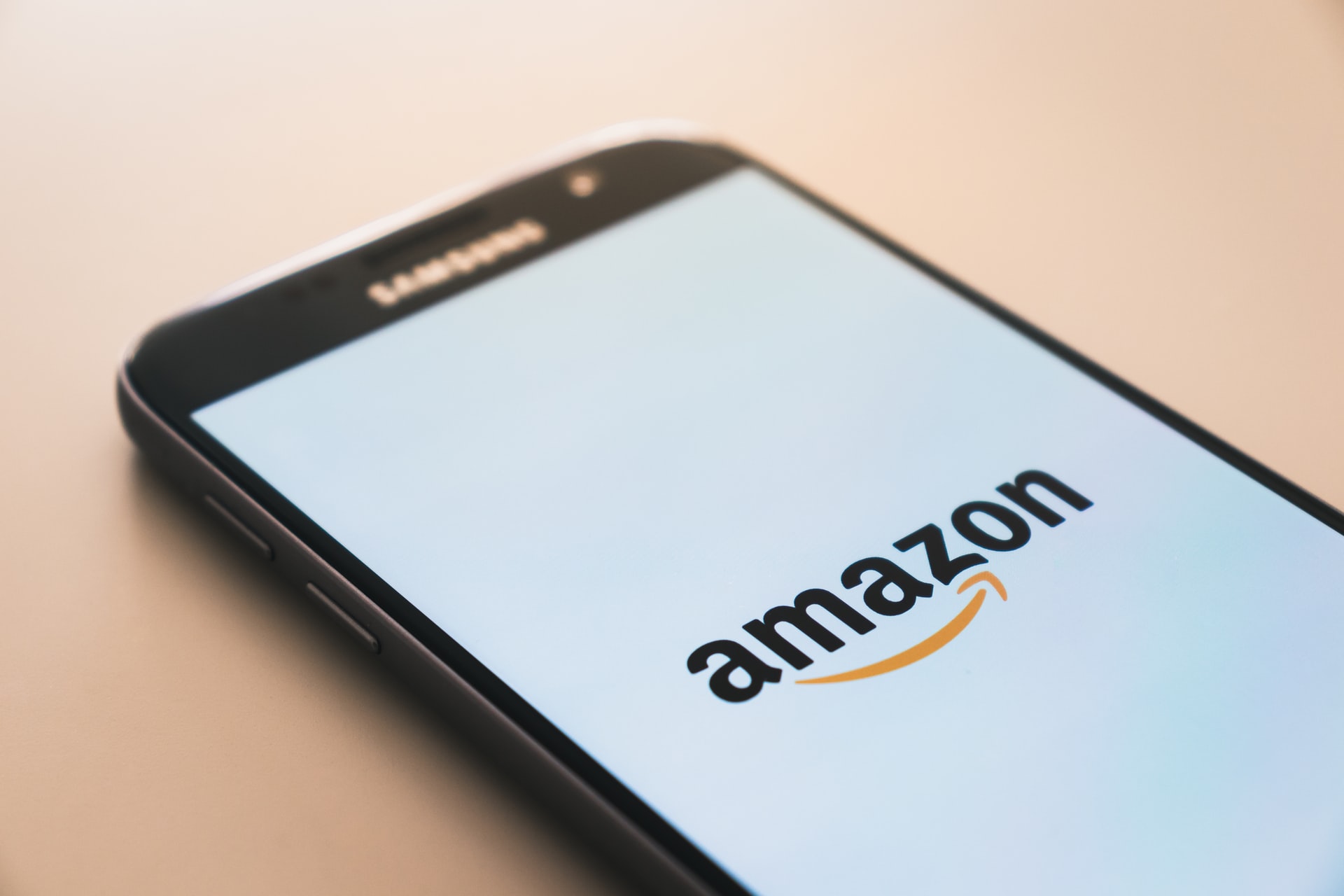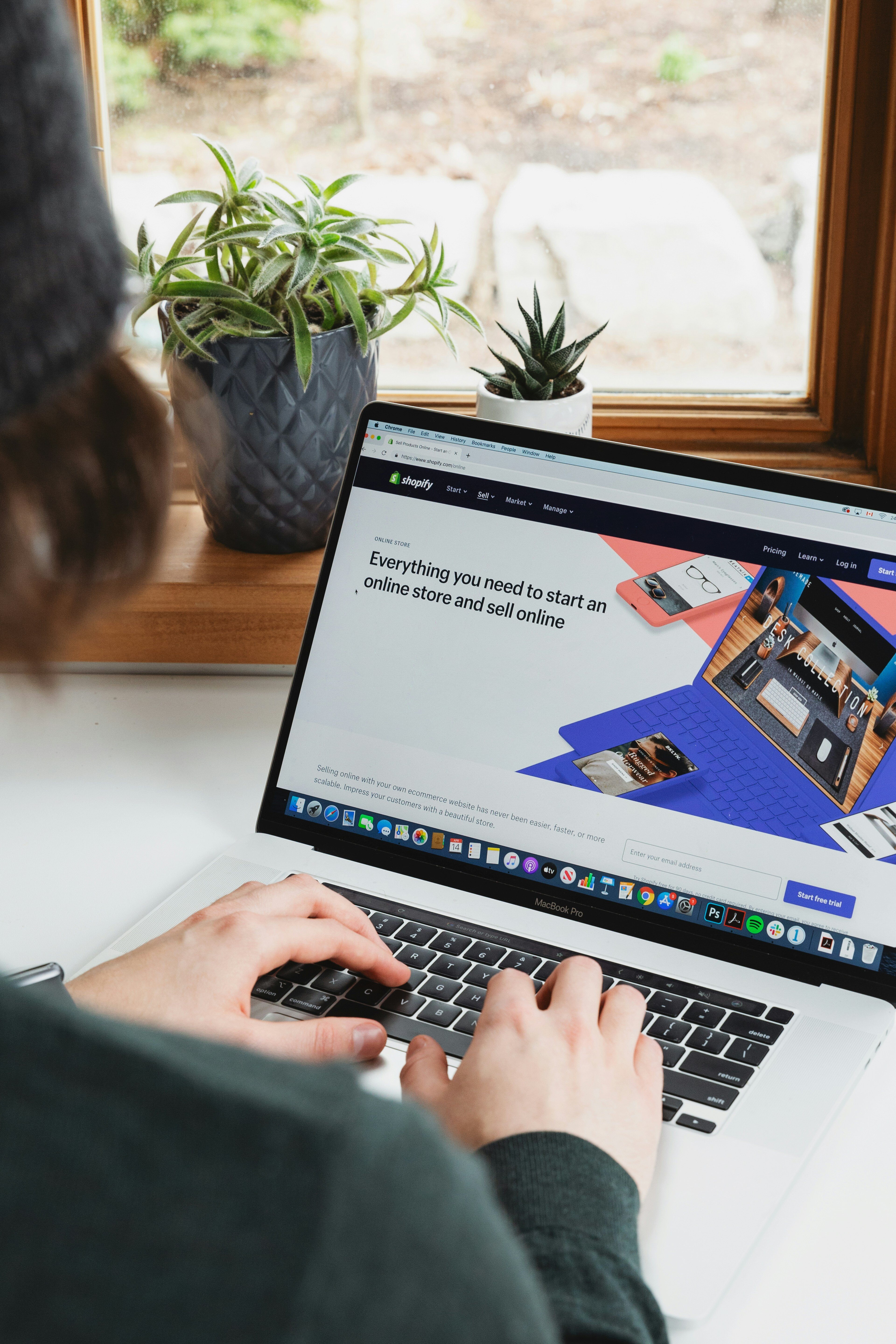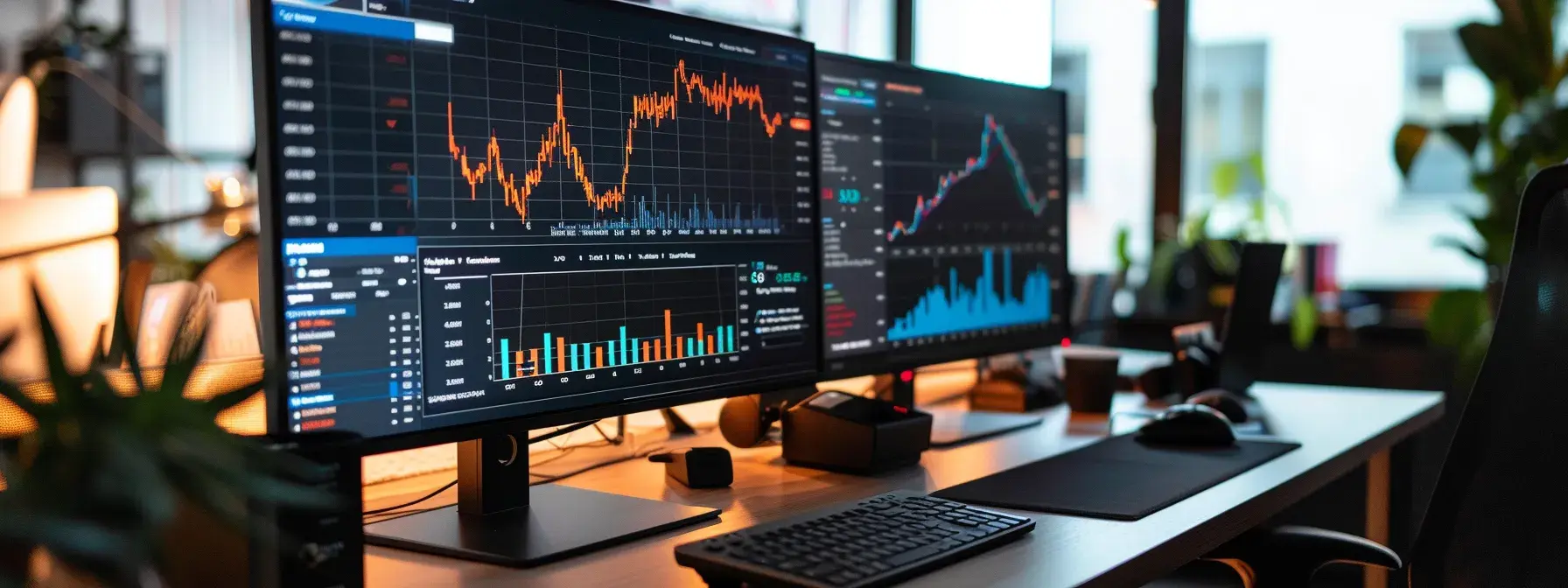This article was updated June 24, 2021.
The first in a two-post series on what Amazon Advertising Sponsored Brands are and best practices for optimizing them manually and with automation. The next post in this series is “Automated Amazon Advertising Optimization for Sponsored Brands.”
I had the pleasure of presenting a webinar hosted by Amazon Advertising in Germany on September 15. In my presentation, I covered tips and best practices for Sponsored Brands, which included:
- The basics of Sponsored Brands ads
- The need to select your KPIs and determine a strategy
- Tips and best practices for optimizing your Sponsored Brands ads both manually and with automation
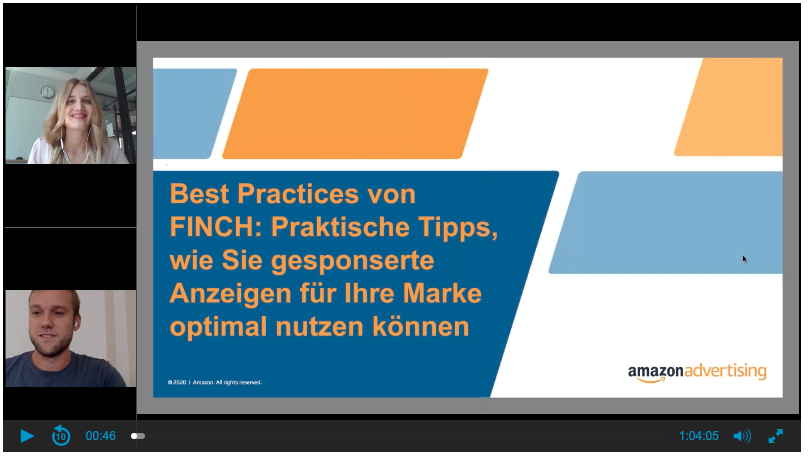
The webinar was in German. So in this post, I share the basics of Sponsored Brands ads, the need for a strategy, and best practices when optimizing your campaigns manually in English, so others can benefit. In my follow-up post, I cover automated optimization.
Finch and Amazon — the History
Finch has worked closely with Amazon worldwide for several years now. We’ve been delighted to have Amazon representatives present at our events. Our collaboration with Amazon has been instrumental in helping Finch grow eCommerce companies’ businesses using the Amazon Advertising channel.
Our work, not only on the strategic services side but on the Finch Advertising Management Platform was recognized by David Zimmerman of DDZIM/PPC in his “Review of All Amazon Advertising Tools.” It also led to my invitation to present the webinar. It was an honor. And attendee feedback was overwhelmingly positive.
I’m happy to share some of the highlights here so Amazon Sellers and Vendors everywhere can benefit.
Why Amazon and Amazon Advertising?
Being an Amazon Seller or Vendor and making use of Sponsored Ads and Sponsored Brands through Amazon Advertising are critical tools for eCommerce companies today. I’ve shared the stats on why in other posts on Amazon Advertising:
- Almost 39% (38.7%) of US eCommerce retail sales happen on Amazon. That’s 7 times more than on Walmart at 5.3%.1
- Amazon is the world’s third-largest online marketplace.2
- 63% of consumers start product searches on Amazon.3
Because of its success and popularity, competing on Amazon Advertising isn’t easy. That’s why Finch works to help companies worldwide optimize Amazon Advertising Campaigns, including companies like EMP. Read how in the EMP case study.
Sponsored Brands on Amazon Advertising
Sponsored Brands is one of three Amazon Advertising options. The others are Sponsored Products and Sponsored Display. Each has its benefit and use. All three are great when used together.
The question of which to use to draw attention to a completely new brand without a large ad budget is easily answered with Sponsored Brands. The arguments in favor of Sponsored Brands for brand awareness and new customer acquisition are:
- It offers a huge reach.
- Sponsored Brands ads have prominent placements.
- Its CPCs are typically cheaper than other ad formats.
- KPIs are extremely measurable for Sponsored Brands. In addition to the clear branding effect (impressions, CTR), growth (sales), and efficiency (ACoS) can also be measured.
As far as your advertising, Sponsored Brands sit right in the middle of your funnel.
| Sponsored Products | Sponsored Brands | Sponsored Display | |
| Key Benefit | Performance: Increase revenue with strong conversion rates and efficient ACoS | Brand growth: Use the most prominent ad space to create awareness for and let customers discover your brand and products | Reach and brand growth: Reach your audience on and off Amazon |
| Purpose | Target customers at the lowest end of the funnel in shopping results and on product pages | Drive customers to your Amazon store with customizable ads in shopping results | Drive retargeting and drive prospects to your product pages |
| Primary Goals | Revenue, ACoS | Brand awareness, new user acquisition | Traffic, brand awareness |
| Secondary Goals | Organic growth | Revenue, ACoS | Revenue, ACoS |
In that middle spot of your funnel, the customers aren’t ready to buy, but are familiar with the product category and intend to buy from that category. That’s why you want to be right there at that time — in a Sponsored Brands ad. Doing so, lets the customer find your product and increases your brand awareness. And it can drive conversions as your prospect goes farther down the funnel.
Bottom line: Sponsored Brands ads let you show up in the most prominent places on Amazon, so you can create brand awareness and acquire new customers.
Sponsored Brands Ad Formats
Before I jump into best practices, let me cover the formats available for Sponsored Brands ads.
The main formats are:
- Product Collection ads
- Store Spotlight ads
- Sponsored Brands videos
Product Collection Ads
A Product Collection ad lets you increase the reach of your top-selling products in a given category. A big benefit is that Product Collection ads push awareness of products that are less visible organically and on Sponsored Products ads.
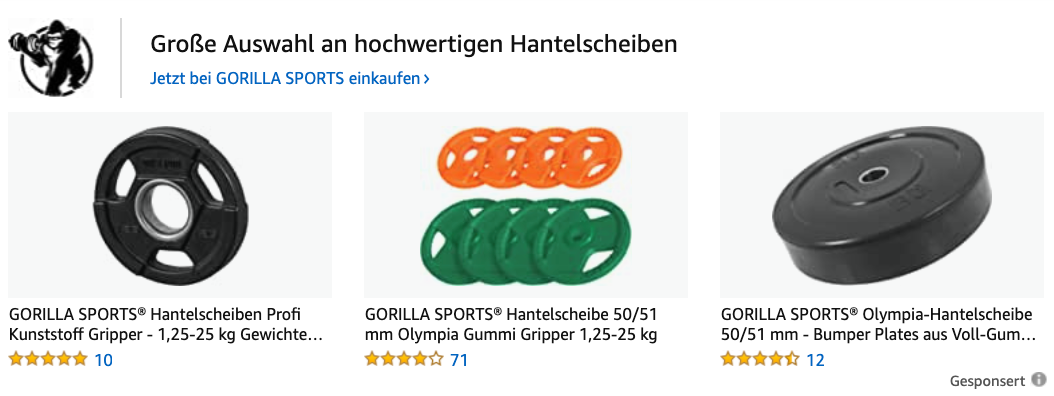
Store Spotlight Ads
Store Spotlight ads offer a prominent placement to promote your brand Store. They’re ideal for brand and competitor keywords, but not product- and category-specific keywords. Brand Store Analytics lets you see exactly which traffic sources — organic, paid, or external — are driving traffic to your store, so you can easily optimize your ads too.

The basic creative element needed for either Product Collection ads or Store Spotlight ads come right from your Store, which makes creative set up super simple. All you need are:
- Your logo at 400 x 400px
- Your product images, which are pulled from your product pages
- A customized or mood image, if desired; must be at least 1200 x 628px and include a logo
- Your ad text, which includes only your brand-name and ad headline
Sponsored Brands Videos
Sponsored Brand videos are newer to the Amazon Advertising mix. I haven’t yet tested this format extensively. I’m convinced though that it will likely outshine the other ad formats in terms of price, quality, and functionality. And I will be testing it. I’ll test with both generic and competitor keywords to get a satisfactory CTR and new-to-brand metric results.

Creative needs for videos are greater than Product Collection and Store Spotlight ads. Where elements for Production Collection and Store Spotlight ads exist for the most part in your store creative, those for videos don’t. To create video ads, you may need to turn to outside help if you don’t have an internal team.
Videos do automatically display your primary product image and associated product information (title, star rating, review count, price, and Prime eligibility) from the product detail page beneath your video.
Basic specifications for Sponsored Brands videos are:
- 6 to 45 seconds in length
- Smaller than 500 MB
- 1920 x 1080px, 1280 x 720px, or 3840 x 2160px
- 16:9 aspect ratio
- .MP4 or .MOV
Videos automatically play when 50% of the video is on the screen. Videos also include a mute toggle button to let shoppers hear the video audio if desired. (Videos are muted by default.)
Where to Send Clicks from Sponsored Brands Ads — Test Your Options
There are different landing pages you can use for your Sponsored Brands ads. My recommendation as a best practice is to continually test three landing page options.
- Your Amazon Store homepage
- A category subpage
- An individual landing page
Your Amazon Store Homepage
If you have a prominent brand, a diverse range of products, and a well-optimized Amazon Store, link to it from the call-to-action button of a brand ad where you target brand and competitor keywords.
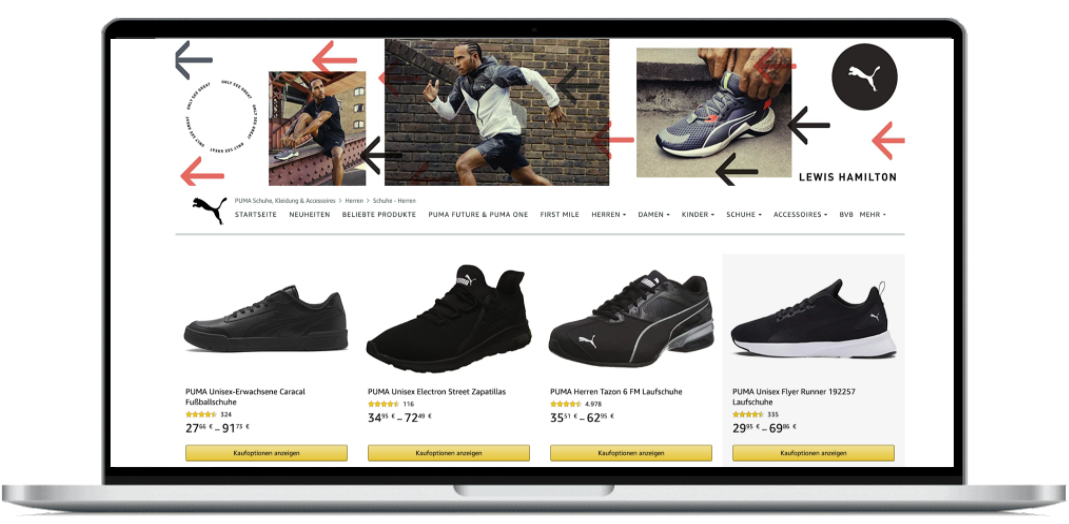
You can also use Store Spotlight ads to target product pages and category pages, but these uses don’t tend to perform as well as ads using keyword targeting.
A Category Subpage
A category subpage is best used as a landing page for ads you’re using for product targeting.
As a best practice, when Finch creates ads for our client LIQUI MOLY that land on general category pages or product detail pages of the competition, we include an overview of what LIQUI MOLY has to offer in the corresponding category. That way, if someone searches specifically for additives, engine oils, or other generic keywords, which apply to LIQUI MOLY, she gets introduced to the category with LIQUI MOLY as a category leader.
As another best practice, if we’re running ads for seasonal categories or deals, we always push the click to a category landing page.
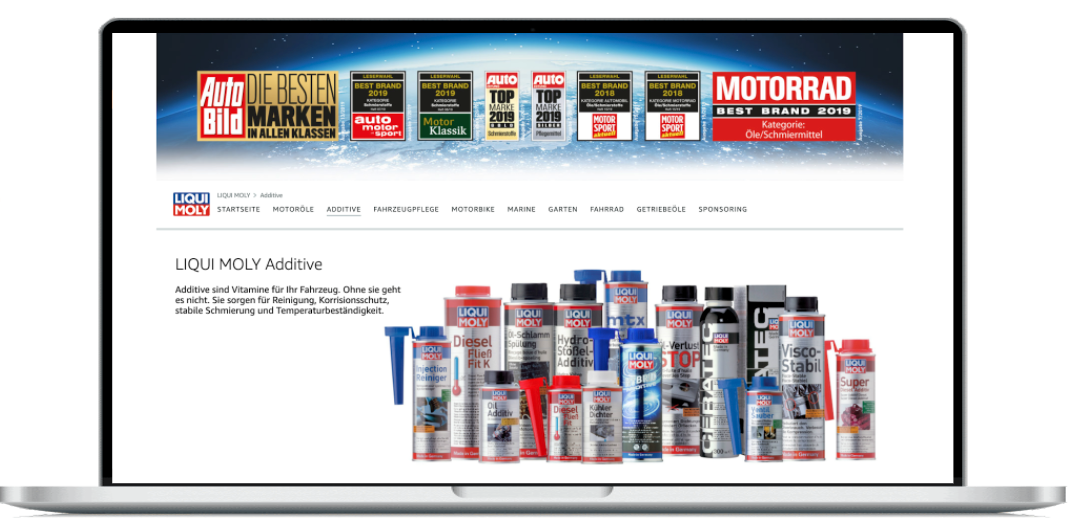
An Individual Landing Page
Sometimes, individual landing pages are the best destination for your ads. Consider Finch client, AnkerKraut. It sells filler-free spices, teas, salts, oils, and rubs online and at retail stores.
For the summer barbecue season, Ankerkraut’s bestsellers are its varieties of BBQ spices. For the summer season, Ankerkraut ads do best when they feature the full variety of BBQ spices rather than the Ankerkraut brand or an individual spice. We feature the full variety with an individual landing page that includes a selection of Ankerkraut’s BBQ spices.
Individual landing pages can also be useful if you haven’t yet set up and designed a store.
Even though creating and continually testing individual landing pages takes time, the effort pays off and lets you see what’s working and what’s not.
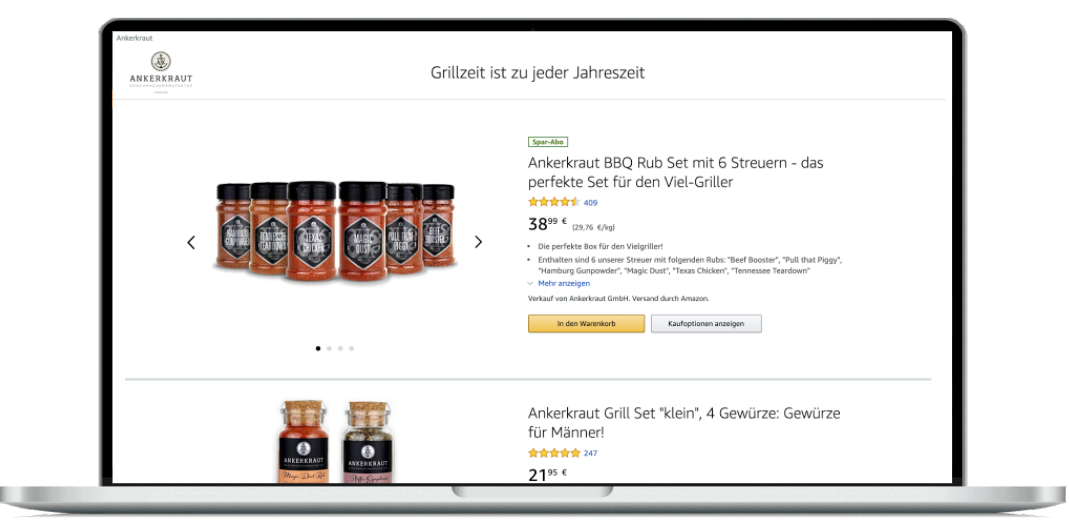
Now that I’ve covered the basic ad types and destinations, let’s talk about ensuring your ads perform. That’s a three-part process that includes:
- Determining your KPIs and the strategy to achieve them
- Setting and managing your budget
- Ensuring your campaigns are optimized on an ongoing basis
In this post, I cover the manual side of ensuring your ads are optimized. In the second post in this series, I cover how you can use automation, particularly with Finch and the Finch Advertising Management Platform.
Best Practices for Sponsored Brands Ads Start with a Strategy
Regardless of whether you’re manually managing your Sponsored Brand ads or using optimization before you create ads or assets, create a strategy.
Start with an in-depth look at the goals for your campaigns. Be aware that Sponsored Brand ads aren’t primarily intended to drive direct sales. As noted above, the primary goal of Sponsored Brand ads is to create brand awareness and acquire new customers.
Depending on which type of campaign and keywords you use, different goals make sense.
- If you use brand keywords, expect to see direct sales and a compatible ACoS.
- If you use non-brand keywords, such as category keywords or competitor keywords, expect to raise awareness and have a higher ACoS.
Pick Your KPIs
Part of your strategy is to determine what you want to accomplish — acquiring new customers, increasing sales, raising brand awareness, etc. The primary Amazon Advertising KPIs that I suggest Finch clients monitor or that we monitor for clients are:
- New-to-brand, which shows you whether a purchase attributed to an ad was made by a returning customer (over the previous year) or a first-time customer.
- Impressions
- Clicks
With secondary KPIs of:
- Revenue
- ACoS
Budget Best Practices for Sponsored Brand Ads
Along with determining your strategy, you want a budget that lets you achieve it. This is my shortlist of budget practices for Sponsored Brand ads and applies to both manual and automatic optimization.
- Plan a budget per day or month and without an end date for general Sponsored Brands ads. Note that Amazon doesn’t let advertisers spread the budget out over the day — once it’s used, it’s gone.
- If your campaigns are for offers and promotions, plan a campaign-specific budget with an end date.
- Test everything. You can test heavily at the beginning of your campaigns for a fairly small amount of budget.
- Make sure your budget is enough to keep your campaign running — if you run out of budget, you lose impressions and clicks. And if your budget is too small, your ads won’t run later in the date, because your budget will be gone.
- Adjust your target ACoS or bids for your unique budget situation.
- If you reach your budget limit, readjust your ACoS target or bids. Use dayparting! Even though you can’t spread budget over the day in Amazon Advertising, you can schedule ads to run only at certain times or increase/decrease your bids based on time of day. Of course, you can’t do this in Amazon Advertising right now.
Must-Do Sponsored Brands Best Practices When Manually Optimizing Ads
When you’re manually optimizing your ads, there are five best practices or “pro tips” that I tell everyone to use.
- Apply what you learn from one campaign type to your other campaigns and vice versa.
- Use both keyword and product targeting. Why? Because they usually get different placements. Targeting both ensures you get maximum visibility. With just keyword targeting, you miss out on showing up on category and product detail pages. Also, competition for category and product detail pages is lower and many placements are vacant and therefore available.
- Segment by brand, non-brand, different categories, and build your campaign for competitor keywords. This makes it easier to analyze performance and make adjustments.
- Re-evaluate performance for each weekday of the last month and test adjustments based on your findings the following month. For example, if you find that your conversion rate is twice as high on Sundays, raise your bids on Sunday.
- Use search term reports regularly to identify new keywords and negative keywords. If you use Finch, we make it easy to get an accessible, actionable search terms report for Amazon Advertising.
Choosing Manual Optimization or Automatic Optimization
When running Amazon Advertising campaigns (and other paid media campaigns), you can manually manage your ads as I’ve covered here. Or, you can choose an agency and/or a solution that lets you automate optimization. All options have benefits depending on your company and situation.
Manual optimization is more realistic if you have just started selling and advertising on Amazon, have enough resources, run fewer campaigns, or advertise on fewer channels and platforms.
Automatic campaign optimization is crucial when you have a smaller team, run multiple campaigns, advertise on multiple channels and platforms, and need to optimize at a scale, which isn’t possible even with a large highly-coordinated team.
I cover how Finch and the Finch Advertising Management Platform helps automatically optimize Amazon Advertising Sponsored Brands campaigns in my next post, “Automated Amazon Advertising Optimization for Sponsored Brands.”
1 Top 10 US Ecommerce Companies 2020. eMarketer.com Mar. 10, 2020.
2 The Future Shopper Report. Wunderman Thompson Commerce.
3 Most popular online marketplaces worldwide in 2019, based on gross merchandise value. Statista. Apr. 6, 2020.
4 Digital Marketing Report Q1 2020. Merkle.

